Extreme Innovation Meets Behavioral Economics
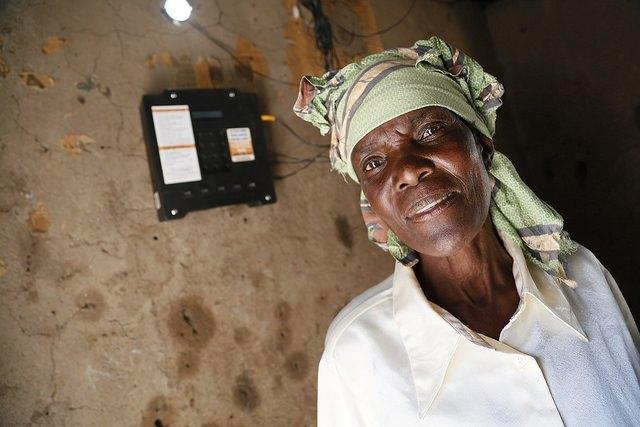

By Leslie Pascaud
As marketers, we are fascinated by the new and the shiny. The most common sources of inspiration tend to be young, fashionable and trendy. Yes, there are plenty of clever ideas sprouting in Brooklyn’s hipster enclave. But increasingly, we are finding remarkable ideas by looking in the opposite direction: the people and institutions forced to innovate in extreme conditions of scarcity, poverty and chaos.
Contrary to what one might imagine, a wave of invention is emerging from the humanitarian sector, and the type and amplitude of this innovation is far from anecdotal. Humanitarian aid represents a $25 billion business. The needs are colossal and innovation is taking place in virtually every domain -- from food to shelter to sanitation, education to health and finance.
Humanitarian products and services are, of course, designed expressly for the use of those in desperate need; yet many of them have applications that can reach far beyond. Robotics are being developed to facilitate telemedicine; 3-D printers create “just in time” parts on-site for water taps and medical supplies, jettisoning the need for manufacture, storage and transport. New forms of solar energy capture are generating deployable power that can provide light, water treatment and communications at the push of a button. We see growing examples of social entrepreneurs reinventing new ways, as simple as they are effective, to address age-old issues.
Take MPowerd’s Luci Light, an bright, lightweight, waterproof, shatterproof, compactable light designed for reliability in blackouts or extreme conditions. The light looks so great that it can double as a multicolor party lamp. Or, Peepoo: a self-sanitizing biodegradable bag designed for single use as a private toilet in natural disaster situations. The bag, which quickly turns human waste into fertilizer, was designed to address the dilemma of lacking sanitation infrastructure. It is now being used in urban slums where water contamination continues to cause typhoid, diarrhea and other intestinal diseases.
Innovation is not reserved to startups. MasterCard Aid Network has jumped into the fray, providing chip-enabled cards that are pre-loaded with lists of food or medicine to be distributed to populations in need. Card owners can dip them into user-friendly terminals and tap photos of desired items along with a PIN code to receive their goods. It is easy enough to imagine how such technology might launch a new form of transaction in bottom-of-the-pyramid markets, beyond crisis situations.
Cutting-edge collaborations are also taking place between the Airbus Foundation and the International Red Cross. These two groups are exploring future uses for technologies like the ‘e-nose’ gas sensor to identify disease. According to Andrea Debbane, executive director of the Airbus Foundation, e-nose technology has already been successfully trialed on the international space station to detect damaging microbiological contamination. There is potential for use in the remote corners of Africa to instantly diagnose illness through the analysis of breath, without the need for blood samples.
Yet as with any innovation, getting the product right is only half the battle. Human factors will ultimately determine whether the new technologies are adopted and whether the results are replicable and scalable. So, humanitarian innovators are looking to behavioral economics to improve their understanding of what motivates or inhibits people from taking action.
Prestigious behavioral economists like Daniel Kahneman, Dan Ariely and Richard Thaler have made it clear that humans -- irrational and lazy as we are --don’t always act in their own best interest. The World Health Organization estimates that, in industrialized nations, more than half of the lost years of health are due to largely preventable behavioral factors like smoking, poor diet, drinking, unsafe sex, car accidents, etc. Unfortunately, this irrational behavior extends to poorer nations as well.
A spectacular medical advance can fail miserably if we don’t understand what prevents people from taking medication on time. Products like PeePoo can only make a difference if we can get people to want to use them and dispose of them properly. As Emmanuel d’Harcourt from the International Rescue Committee states in a recent op/ed: “There’s nothing wrong with investing in technological resources, but there is something profoundly wrong about doing so without investing first in the most basic elements of an effective response: communication and local capacity.”
We at Added Value learned this first-hand when working with the Clean Cookstove Alliance in Ghana. According to a Global Burden of Disease Study, toxic fumes from cooking with solid fuels and inefficient traditional stoves cause 4 million premature deaths annually. Innovative clean cookstoves are available. But that doesn’t mean people will use them.
We spent time with low-income rural and urban families in Accra, Takoradi and Ashanti to observe and discuss the role of cooking in their lives, to understand their preferred cooking methods, and to reveal the power dynamics around finances and purchasing. We discovered that health would not be the primary driver for purchase of a clean cookstove. Rather, what women got excited about was the potential to save time in their busy days. The aesthetic appeal of certain stoves provided a secondary status benefit that seemed to clinch the sale. Equally important: We learned that, for any sale to take place, financing mechanisms would need to be put in place that recognized local preferences for ‘credit,' which for Ghanaian women translates to door-to-door collection. By finding the keys to reducing friction, increasing appeal and leveraging social norming, we hope to have built a plan that will ultimately drive successful adoption.
Of course innovating for extreme crisis situations is far from synonymous with launching the latest watch or motorcycle in a developed market. Needs, context and mindsets are radically different. But the common thread that unites the two is the necessity to understand human behavior and to apply the lessons wisely. Behavioral economic findings can provide the cognitive, social and contextual clues to better frame an idea, to implement it more appropriately, and to avoid the pitfalls that can make the delivery of the best-intentioned extreme innovations a missed opportunity.
Image credit: Flickr/U.K. Department for International Development
Leslie Pascaud is Executive Vice President of Purpose Branding and Sustainable Innovation at Added Value.
Businesses Grow By Turning Disability into Accessibility
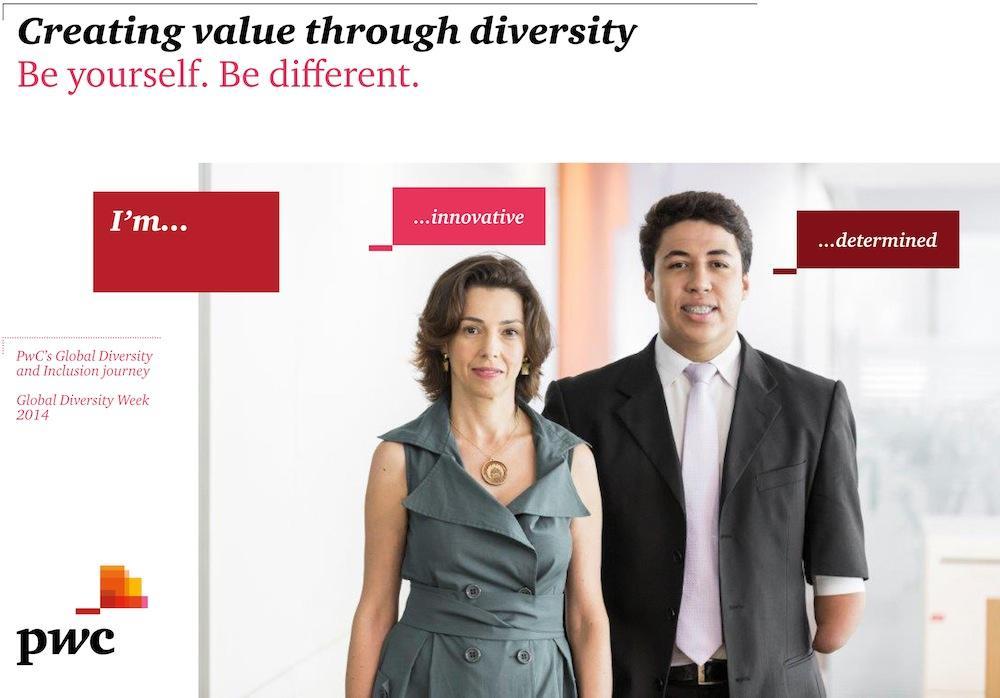

Forty-some years ago, when self-propelled wheelchairs were a new sight, rebuilding walkways became the defining emblem of physical accessibility. Cities invested millions of dollars into refashioning street corners to ensure that people using wheelchairs and walkers and those accompanied by guide dogs could safely cross the street.
These days, those gentle sloping ramps are an assumed part of the architecture not only in cities, but also small towns, parks, and national and state landmarks. So are accessible bathrooms, entrances and redesigned hotel rooms.
In fact, one has only to turn to the English language to realize how far we have come. Advocates for accessibility have worked hard over the years to elevate our consciousness in how we speak about people who are differently-abled. The phrase accessibility has supplanted our mindset about disability and handicapped limitations -- or at least, it has tried.
Granted, speak with anyone who suffers from mobility limitations, or cares for a child with physical or emotional challenges requiring around-the-clock support, and you may hear a different story. You will hear about the needs that aren't necessarily solved by wheelchairs, canes or walkers, and yet often set the boundaries against a lifestyle many of us take for granted. And you will also hear about the ways that people, with determination and ingenuity, are learning to get around those limitations.
Today, the struggle to redefine accessibility isn’t marked by what can’t be done, or places one can’t go, but by the partnerships that make mobility of all kinds a possibility.
Take, for example, my service dog, Happy.
At 106 pounds and almost 3 feet in height, Happy, a German shepherd, is a commanding presence. But it isn't his size that makes him so formidable. It's his innate ability as a mobility dog to sense risk, medical challenges and unexpected circumstances. It is his intuitive ability to pick up on shifts in circulation and gait. And most importantly, it is his ability to work in sync with his handler and to anticipate needs in advance.
They are qualities that not only benefit an individual with mobility or medical challenges, but also businesses in today’s global marketplace, where many of the 56 million-plus Americans with disabilities work and do business.
In fact, the growing acceptance of service dogs is only one sign that society has become more inclusive toward diversity. The days of my aunt’s era, when a person restricted to a wheelchair often waged an unsuccessful battle to find work, are becoming a more distant memory. Today businesses, not just governments, are helping to redefine the inclusive society.
These businesses are opening the doors that allow talented people like my nephew, who has autism, to go to school and to hold a full-time, well-paying job as a tradesman. They have paved the way so that people like my brother, who suffered from multiple sclerosis, could maintain a B2B company in a mobility-demanding profession. And best of all, they are continuing to change the mindset toward what a focus on diversity has to offer for a successful, dynamic and growing enterprise.
In recent years, a small number of companies have taken the lead on this issue. One such business is PwC, a professional services firm known not only for its support of workplace diversity, but also for its focused recruitment of individuals who stand out for their self-tailored ability to think outside of the box. And those are qualities, said Brad Hopton, that often distinguish individuals who have had to face the challenges of disability.
“When I hear the word 'disability' these days, I think of someone who is hard-working,” said Hopton, a tax partner and disability inclusion networks partner champion at PwC. It’s someone who has faced adversity in his or her own lifetime, he said, and is “accustomed to overcoming challenges with resolve” -- a person with “strong, strong technical skills, who will look at a problem with a fresh perspective." It may be a person who is disabled, or a caregiver who provides support for a family member with special needs, a role Hopton identifies with in his personal life as a parent to a disabled son.
“And this is the type of talent and the type of individual we want at PwC to really challenge that conventional way of thinking.”
Through its unique Abilities Reveal Itself (ARI) program, PwC is redefining how business sectors define the capable, skilled worker. It’s no longer just about a good education and a rudimentary, complementary work background. It’s about harnessing the intuitive talents that come from independent thinking and problem-solving.
“I have a whole team that is focused in on the sourcing of individuals with disabilities and actually reaching out to campuses,” Hopton told 3p. And finding those special candidates often starts with a little educational networking on site. “[In] some cases, we have to go to those schools and to connect the career-placement office with the disability-services office,” in order to ensure that individuals listed as disabled can receive the same priority career services as other students. “We actually kind of bring [the two offices] together on occasion and articulate what we are trying to achieve.”
At PwC, this focus has helped not only to harness top talent, but also foster trust in the workplace that the company means what it says: It seeks and encourages diversity. Staff members who need help or accommodation because of illness or disability can get assistance through PwC’s AbilityWorks program, without fearing for their jobs. And making the process more accessible, contrary to conventional thought, cuts costs.
“[For] less than $500 for an accommodation, you can change someone’s PwC experience and you can help them maximize what they can bring to our organization and our clients,” Hopton said.
But fostering an inclusive work environment doesn’t stop at the front door. It takes networking with clients and businesses. It means using the teachable moments to educate others about accessibility. It takes recognizing that, at the end of the day, there is a business imperative to supporting diversity, just as there is a moral or compassionate one: A clearly identifiable workplace diversity platform speaks volumes to clients and potential employees alike.
“It can’t just be lip service. It can’t just be messaging from the top. You’ve got to show it through the program and your activity on campus and the messaging that is going across your organization," Hopton advised. "You’ve got to live it.”
And consumers notice its success as well. Today’s accessibility frontier isn’t really defined by laws, but by those within business sectors who take the first step to ensure an open-door, rewarding environment for a person with a disability.
All of these actors -- the airline that openly supports families with autism; the bookstore owner, grocery store manager, librarian or clergy that takes steps to ensure their very first first four-legged customer can focus on his job while his handler is present; and the business that strives to make disability an invisible concept -- send a clarion message to consumers and companies alike: Inclusiveness is smart business.
Image courtesy of PwC
A Year After Quake, Relief Efforts Continue in Nepal


A year ago this week, a 7.8-magnitude earthquake struck the Nepalese capital of Kathmandu, killing more than 8,500 people. Less than a month later, another quake hit eastern Nepal, near Mount Everest, claiming hundreds more lives. Millions were displaced by the quakes and aftershocks, and the Red Cross estimates that 4 million people are still living in substandard, temporary housing, BBC News reported this week.
The immediate global response allowed aid workers to reach affected areas quickly with essentials like food, water and medical care. But the transition from immediate disaster relief to reconstruction has proved challenging, as the BBC report outlines in detail. Millions in nonprofit funds sits unspent as local politicians debate on plans to rebuild, leaving families dejected and uncertain. And this says nothing of the resilience-building efforts that will undoubtedly be needed to help the country cope in the event of future disasters.
As nonprofits and governments go back and forth on how best to rebuild affected communities, the need emerges for the private sector step in and fill the gaps. To that end, efforts are underway to revitalize Nepal's most lucrative industry -- tourism. Travel and tourism contributed 83.7 billion Nepalese rupees (around US$780 million) to Nepal's economy in 2014, representing 4.3 percent of GDP. The industry directly employs around 500,000 people, with indirect employment exceeding 1 million.
In a press release earlier this month, industry nonprofit Tourism Cares announced that Nepal is officially "open for business" and released a free map of “meaningful destinations” in Nepal to promote travel in 2016. But some travel companies sent visitors back to the country long before that.
REI Adventures, the adventure travel offshoot of outdoor gear retailer REI, became one of the first to resume operations in Nepal's Everest and Annapurna regions last fall. The company is also spearheading a resilience initiative to help communities in these regions prepare for future disasters -- and its efforts are a case study in how the private sector can collaborate with governments and nonprofits, cut through red tape, and do its part to make a difference.
REI Adventures in Nepal: Longstanding relationships foster true community impact
REI Adventures has a long history in Nepal. Nepal's Everest treks were the first trips on offer when the co-op adventure travel company formed in 1987 -- and it has worked with the same lead guide, Mingma Dorji Sherpa, ever since. Cynthia Dunbar, general manager of REI Adventures, referred to Mingma's team of in-country guides as part of the "family."
Perhaps it's this longstanding connection with Nepalese trekking communities that made the company's response to the disaster so unique. Private-sector outreach is often lambasted as tone-deaf, with companies flooding millions into a cause without taking the time to understand what people on the ground actually need. But REI responded quickly and in ways that were immediately felt by affected communities.
Case in point: The quake struck at the start of the spring trekking season. As travel companies canceled tours, thousands of guides were left without income when they needed it most. “Many members of Mingma’s team needed to repair and rebuild their homes, and like all of us, depend on their salaries," Dunbar explained. To keep its team intact and make sure they were supported, REI Adventures paid its guides' full salaries, including tips, for all canceled trips. Dunbar said this was simply "the right thing to do."
The company also made an immediate donation to Mercy Corps to support the nonprofit's aid workers already on the ground. For the first time, it also called on its co-op members to join in donating to a cause, and nearly 11,000 members donated $852,000 in just a few days. The funds were used to distribute emergency supplies and clothing in the initial wake of the disaster, reaching approximately 11,275 families (an estimated 56,375 people), according to Mercy Corps. REI’s vendor partner LifeStraw also donated 50 community water filters to provide safe drinking water to 25,000 people.
But, as the BBC noted, efforts can't stop there -- another thing REI Adventures and its parent company seem to have grasped from the start. Since the disaster, REI has worked quietly with local partners and community leaders to construct the Everest region's first disaster relief center in Namche Bazaar. In another best-practice example for the private sector, rather than donate some money and run, the outdoor enthusiasts at REI are showing what's possible when early-stage efforts are matched with consistent and tireless follow-through.
From relief to resilience: It's all about follow-through
As the unofficial capital of Nepal’s Khumbu region at an elevation of 11,286 feet, Namche Bazaar and its surrounding communities are home to over 2,000 year-round residents. The population jumps significantly during the spring and fall seasons, when trekkers and climbers stop to acclimatize on their way to Everest Base Camp. As REI points out, "Nepal is a country of extremes." During non-trekking seasons, the region can experience devastating monsoons and fires.
To help the region rebuild and promote resilience, REI’s in-country guide team joined forces with the Sagarmatha Pollution Control Committee (SPCC), a local environmental nonprofit. (For those who didn't major in geography, Sagarmatha is a district in Nepal that is part of the Khumbu region.)
Established by the local people, the SPCC's initial aim was to promote waste management activities in the Khumbu, including Everest Base Camp and higher camps. Its partnership with REI centers around the new relief center in Namche Bazaar, which will provide essential supplies that can be accessed by the community in the event of a future natural disaster.
The relief center represents public-private partnership in its purest form -- counting a global travel company and a regional nonprofit, along with police, army and the local Sagarmatha Buffer Zone Authority, as collaborators. Local residents were employed for the construction, and REI's guide teams facilitated engagement with the community.
“SPCC had this plan for a long time, but because of lack of funds, they were not able to do it," said Mingma Dorji Sherpa, REI's lead guide in the region. "Now they have this building standing in Namche; it will be a big help in the whole region.”
REI also provided funding to Nepal SEEDS, a local nonprofit founded by an REI Adventures guide. Back in 2011, the travel co-op donated funds for 100 residential and community biogas systems through Nepal SEEDS. These systems provide sanitary restroom facilities for communities that don't have them and eliminate the need for in-home wood fires for cooking. Many of the systems were severely damaged during the earthquake. Continued funding from REI will allow the nonprofit to repair damaged biogas systems and continue to expand its efforts to build new medical facilities, schools and residences in the region.
"That's a very important piece of investing in projects in developing countries: Don't leave things broken," Cynthia Dunbar of REI Adventures told 3p back in November. "And I think that's a big part of who we are [as a company] is making sure that we continue to take care of those places where we've either invested or where our members love to recreate."
Such a philosophy is the antithesis of the set-it-and-forget-it model that often dominates corporate philanthropy, in which companies dump cash and in-kind donations on nonprofits and pay little attention to the ultimate outcome.
Through all efforts to date, more than $1 million has been donated or granted by REI members, REI and LifeStraw. REI's in-country team will continue to work with the new relief center moving forward.
To encourage co-op members to return to Nepal for adventure travel, REI will offer a $600 discount on its 14-day Everest Lodge-to-Lodge Trek from May 20 to May 30 during the company’s anniversary sale. Travel must be completed in 2016.
While no single company can repair a disaster-ravaged country like Nepal, REI's efforts are an example of what can be achieved when firms take an active stance on the micro level. If every company did the same in the regions where they do business, the collective effort would surely buoy broader government attempts to rebuild -- a boost that, as news reports this week indicate, is sorely needed.
Image credits: 1) Dan Patitucci 2) and 3) Courtesy of REI Adventures
TaskRabbit CEO Announces First African-American Inclusion Plan


Stacy Brown-Philpot was recently promoted to CEO of TaskRabbit, making history as one of a very short list of African American and female leaders of multimillion-dollar tech companies. Previously, she held the title of COO. Within days of her newly appointed position, Brown-Philpot made headlines again, announcing TaskRabbit’s commitment to increasing diversity in tech by being the first tech company to adopt an African American inclusion plan in conjunction with the Congressional Black Caucus’ CBC Tech 2020 initiative.
The CBC’s initiative focuses on increasing African American talent and representation within technology at all levels of the industry by partnering with companies and organizations to develop strategic recruiting and retention plans for this demographic.
“Building a strong, diverse and inclusive community is key to any sector’s growth, and teaming up with CBC Tech 2020 is a natural step for TaskRabbit to re-confirm our commitment to being an open, forward-thinking and innovative organization in Silicon Valley,” Brown-Philpot said in a press statement.“We’re proud of our efforts around diversity where our approach has always been to partner and build relationships with groups that can help us connect with underrepresented candidates, mentor those candidates once they join the team, and support our employees to maintain an active presence in the community. This plan recognizes TaskRabbit’s diversity as a huge asset aiming to break down barriers while shining a light on ways to expand the great talent of black individuals.”
Guided by four primary initiatives, the African American Inclusion plan will:
- Increase representation of African American talent in the company from 11 percent to 13 percent by the end of 2016 in order to reflect the population in the United States.
- Retain African American employees by developing a supportive, diversity-friendly culture.
- Increase awareness and educate employees on the importance of diversity and understanding unconscious bias to support the recruitment and retention of African Americans.
- Strengthen awareness around the importance of increasing diversity within the technology industry by sharing the initiatives and results of their efforts with the public.
Of TaskRabbit’s over 70 employees, 11 percent are African American; 5 percent are Latino; 11 percent are Asian; 11 percent are LGBTQ; and 58 percent are female.
TaskRabbit’s employee diversity statistics skew surprisingly healthy compared to many other large companies in tech, where people of color represent a mere 3 percent or less of the employee population and just 23 percent of employees are women.
"The community we represent as a company is the United States of America. Our company should represent the USA as well,” Brown-Philpot opined.
She continued to share how companies can begin to adopt and shape cultural values for their organizations as part of the DNA of their brands early on in the process — not just an afterthought or publicity initiative after the company has grown into a large company.
“Allow these things to be grassroots and organic. When you’re making your early hires, make sure it’s people who reflect the values of the company. Do they reflect the importance of diversity and inclusion?"
Image courtesy of TaskRabbit
Canada’s Justin Trudeau Swims Against the Tide of Austerity
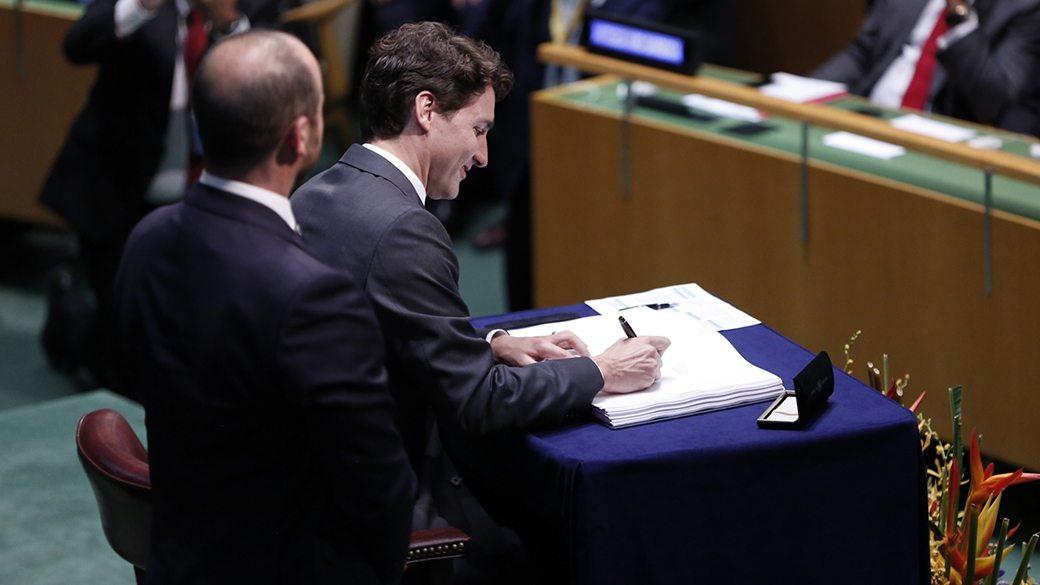

For the past several years, we’ve been told that austerity is the way for the international economy to grow. Well, we have seen the results in the European Union, and they proved dubious at best. Across the pond, Obama’s 2009 financial stimulus package in part led to the rise of the Tea Party, yet considering the state of the economy, many economists agreed the legislation was at best a tepid response. Citizens across the globe who were kicked in the gut after the 2008-2009 fiscal crises felt knee-capped by their governments’ fiscal restraint.
Some countries were able to ride the wave over the commodities boom, thanks largely in part to China’s continued ravenous demands for everything from soy to oil to almonds. Leaders of nations such as Argentina, Brazil and Canada were able to stay and prosper in office thanks to the financial windfalls resulting from China’s continued imports of raw materials. But now China is cooling off, and while a 6.7 percent GDP increase is a figure in which most countries would revel, that drop in economic growth is the equivalent of a crash to many of China's trading partners. And the leaders of those aforementioned countries are either gone or deeply unpopular.
So, speaking of Canada, where the economy has slowed down and revenues decreased due to the falling demand for oil, its government is going against the grain and is actually increasing spending on social programs.
Despite volatile markets, a collapse in oil prices and a steep downtown in global commodities, Canada’s current government is drawing up a budget that it says is focused on securing the country’s middle class, even if that means a temporary spike in deficits over the next five years.
Sparked by Prime Minister Justin Trudeau and his coalition’s landslide win over predecessor Stephen Harper, Canada’s current government, with Finance Minister Bill Morneau at the controls, seeks to capitalize on the nation’s current low debt burden and low interest rates. Morneau presented a plan that boosts spending on what Canada says are much needed “innovation, jobs and training.”
At a recent G-20 meeting in Washington, D.C., even the stodgy International Monetary Fund (IMF) described Canada’s fiscal policy as one with strength and a strategy that other countries should consider. The 2016-2017 Canadian federal budget hearkens back to the New Deal era under U.S. President Franklin Roosevelt, with its modest tax cuts for middle class income earners, funds for infrastructure and technology, and tweaks in the country’s unemployment insurance program.
Over the next 10 years, in fact, Canada is targeted to spend about CAD120 billion (US$95 billion) on infrastructure. To put that in perspective, Canada’s population is a little more than a tenth the size of the U.S. Despite that spending, the accountancy Deloitte suggests that economic growth the next five years means that the federal government’s debt-to-GDP ratio will actually decline.
Such a policy is a bold move for Trudeau, but that is what Canadians expected after 10 years of Harper. First seen during his political rise as vapid with little between the ears and under that mop of hair, Trudeau’s approval ratings are still high as he has taken on issues from climate change to gender equality. He wowed many with his adroit explanation of quantum computing (though some say that he staged that event), and yes, his yoga pose shows he has got quite the core. Some say his financial largess is only possible because of Harper’s prudent financial management, and his finance minister has raised eyebrows for perceived inexperience.
Nevertheless, at a time when leadership worldwide seems to be in retreat while demagoguery is building steam, Trudeau shines as one not afraid to take risks and not quick to blame the unfortunate for society’s problems. Most importantly, he’s fearless when it comes to rattling cages and showing that, for Canada, it's not going to be business as usual during his mandate.
Image credit: Prime Minister’s Office
The Social Safety Net, Income and U.S. Life Expectancy
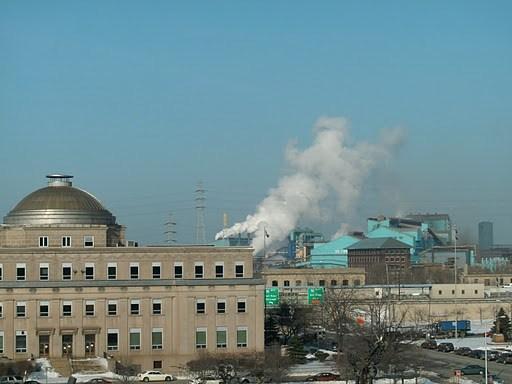

Evidence has long suggested correlations between income and life expectancy. As innovations in medicine and public health emerged, it became clear that those who had access to the best in health care, food and housing often lived longer than their less affluent peers. But new research suggests that not only does income have an impact on life span, but living in an area where social services are readily available can help boost the length of life for even the poorest citizens. Published in the Journal of the American Medical Association, these findings should be read by anyone in the corporate responsibility space who has influence over how his or her organization devotes resources within the local community.
If you take a look at America's 100 largest metropolitan areas (or as the study describes as “commuting zones”), you’ll note that eight of the 10 areas with the longest overall life expectancy are in regions with warmer climates. View the data geographically, and the regions where citizens have longer life spans are generally clustered along the West Coast and Northeast. New York City residents have the longest overall life expectancy, nudging past Santa Barbara, California, at No. 2. The bottom three on the list are Oklahoma City, Las Vegas, and Gary, Indiana.
Surely intangibles play a part. New Yorkers will remind you that climbing up stairs at subway stations and apartment buildings, while chasing buses, subways and taxis, is why they are generally skinny compared to most Americans. Californians and Floridians will boast about the ample sunshine, which leads to ample Vitamin D and often a more optimistic outlook on life. New York has long benefited from its legacy of corporate philanthropy. West Coasters will tout more casual and creative work environments. Nevertheless, other forces surely are at hand.
So, what’s going on? This study, co-written by economists from Stanford, Harvard, MIT, the U.S. Treasury and McKinsey, found that the poorest Americans tended to live longest in more affluent cities that offered more opportunities to social services and education.
True, being rich in Gary or Cincinnati, Ohio, is still more comfortable than being poor in the Bay Area or Miami. But while the likes of Ted Cruz and Ben Carson decry what they believe is out-of-control social spending, this research posits that living amongst affluent and highly-educated citizens — if they are willing to pay for such services with their taxes — can lead to a longer life for poorer Americans. In fact, since the early 2000s, areas like New York City and San Francisco have seen significant increases in life expectancy among the poor.
Poverty’s impact on men is especially telling, as there is a wider gap in life expectancy between the poorest and wealthiest men than between poor women and rich women. Deindustrialization, the opioid epidemic and mass incarceration are all parts of this growing problem. With those challenges also in mind, policymakers need to take a hard look at this data as society struggles to answer phenomena such as the sudden decrease in life expectancy among middle-aged whites, for both men and women.
Indeed, people always complain that they are being left behind, which explains the rise of Bernie Sanders and Donald Trump, who both tout campaigns funded by supporter donations rather than political action committees. But now too many are dying too soon, and they are of all races and backgrounds, in both urban and rural areas. It is now clear that inequality is having a big impact on not only access to opportunities, but also on the most important thing, the length of one’s life.
Image credit: TakingActionInGary/Wiki Commons
Explosion at Pemex Oil Plant in Mexico Kills Over 30 People


An explosion at an oil facility in Veracruz on April 20 killed 32 people and injured over 130. The Petroquimica Mexicana de Vinilo facility is owned by Pemex, Mexico’s state oil company, but operated by Mexichem, according to a company statement. The plant is located in Veracruz, the southeastern Mexican state that includes the city of Coatzacoalcos, about 373 miles southeast of Mexico City.
CNN reported that the explosion “sent large plumes of dark smoke and toxic fumes across the region,” forcing surrounding areas to be evacuated. The company said in a statement that air quality “continues to be monitored in order to determine the existence of toxic substances that could endanger health, which continue to be ruled out.”
This is not the first explosion. In September 2012, an explosion occurred at a Pemex gas plant in Tamaulipas, a Mexican state in the north. The explosion killed 33 people. A year later, in January 2013, methane gas and solvent vapors set off an explosion at the company’s headquarters in Mexico City and killed 37 people. One of Pemex’s oil rigs in the Gulf of Mexico caught fire in 2015, and a fire at a Veracruz plant in February killed a worker.
Pemex, short for Petróleos Mexicanos, is plagued by financial problems. Owned by the Mexican government, Pemex reported losing $9.3 billion in the fourth quarter of last year. It lost $32 billion in total in 2015. According to the report, Pemex “faces a liquidity issue.”
There are a number of reasons for Pemex’s troubles. An article by OilPrice.com points out several. First, the company’s oil production is in decline and has been for over a decade. In the fourth quarter of 2015, output was 2.328 million barrels per day (mb/d) on average, a 3.5 percent drop from the fourth quarter of 2014. According to Bloomberg, Pemex has not recorded a profit since 2012, and it had over $87 billion in debt at the end of the third quarter of 2015. Pemex owes “an estimated $7 billion to service providers,” Bloomberg reported.
Back in February, the Mexican government replaced the CEO and ordered Pemex to cut costs. Mexican President Enrique Pena Nieto said then that he gave “instructions to the new director to make the efficiency and profitability of all Pemex's activities his top priority.” He also said it “will be necessary to adjust the cost structure, revise the spending program and strengthen the investment processes.”
As a state-owned oil company, Pemex is “Mexico’s state oil monopoly,” as Banderas News put it, and as such the company is “protected from competition in Mexico.” In fact, Pemex has a “legal monopoly on the exploration, processing and sale of petroleum," the newspaper reported. And clearly, that is a real problem for Pemex. Or, as Forbes pointed out, Pemex’s money troubles have “largely been caused by successive Mexican governments” which treat the company as its “cash cow” and that has been “milked to death.”
Forbes cites other causes for Pemex’s financial woes, including being handicapped by poor management, a dysfunctional organization and not being given operational autonomy by the Mexican government. And all of the company’s “major investment decisions” are done by “its government-dominated board.” There is still one more cause that Forbes mentions, and that one is corruption, with Pemex staff likely tied to “kick-backs, side deals and outright theft over the years,” the magazine reported. Given the corruption that the Mexican government is known for, it is little wonder that a government-owned company is plagued with similar problems.
As its oil company struggles, Mexico has made commitments to tackle climate change. In 2012, the Mexican Congress unanimously voted for a General Law on Climate Change, which went into effect later that year -- making Mexico the first developing country to pass a comprehensive climate change law. Some of the aims of the law are to set mandatory greenhouse gas emissions requirements, reduce fossil fuel subsidies and increase renewable electricity generation to 35 percent by 2024. Owning a national oil company does not seem to square with that law.
Image credit: Flickr/Matthew Rutledge
Abolitionist Harriet Tubman: The Next Face of the $20 Bill


Last week, when Treasury Secretary Jacob Lew announced that Harriet Tubman would replace Andrew Jackson on the front of the $20 bill, he said he wanted more conversation about women in U.S. democracy.
Well, he got it ... sort of.
There has been no end of media chatter since his announcement that the 19th-century abolitionist and civil rights advocate would be this treasury's pick as the woman to be featured on the U.S. $20 bill (and elevated, at that, from the proposed $10 bill). The issue has raised debate about race, politics, presidential candidates and foibles of the current administration. It's raised conversation on just about every controversial topic but one: women's rights.
To talk about women in democracy these days, we are compelled to talk about women's rights. And Harriet Tubman's history personifies that discussion. She didn't just advocate for a more just society, she lived and fought for it. She idealized it in her words, inspiring many to look past race and recognize the bravery and worth of a life that was dedicated to human rights.
When we celebrate her memory, it's her words we most often call to mind to symbolize the character of a who she was: "I freed a thousand slaves. I could have freed a thousand more if only they knew they were slaves."
It may not seem to reflect the vernacular of today, where a collision course between global warming and environmental apathy is often the topic that symbolizes our generation's battles, but it offers a much-needed reminder: It is often the human spirit that characterizes our era and how we face up to a challenge, not the battle itself.
And as to whether a woman should indeed be featured on one of the country's most circulated currency bills, perhaps the questions that really should be asked are: What took the treasury so long to do so? Why has it waited hundreds of years? And why will there be only one?
The answer to all of these questions isn't hard to see: Change comes in small victories. And huge accomplishments come with patience, as Harriet Tubman also pointed out when she noted that it takes "patience and the passion to reach for the stars to change the world." It took 219 years for the country to elect its first black president. It took more than a hundred years to finally have a global discussion about climate change.
The new $20 release will be timed to coincide with the 100th anniversary of women's right to vote. Lew says that other currency changes will happen at that time but few, I imagine, will be as stirring or thought-provoking as Harriet Tubman's.
Putting the image of a female African American hero on the face of the $20 bill to remind the next generation that women, too, played a role in the founding of this country is a great first step in our dialogue about women and democracy. But it shouldn't be the last.
Image (cropped): Public Domain/TradingCardsNPS
Conscious Capitalism: Evolving the Narrative of Business
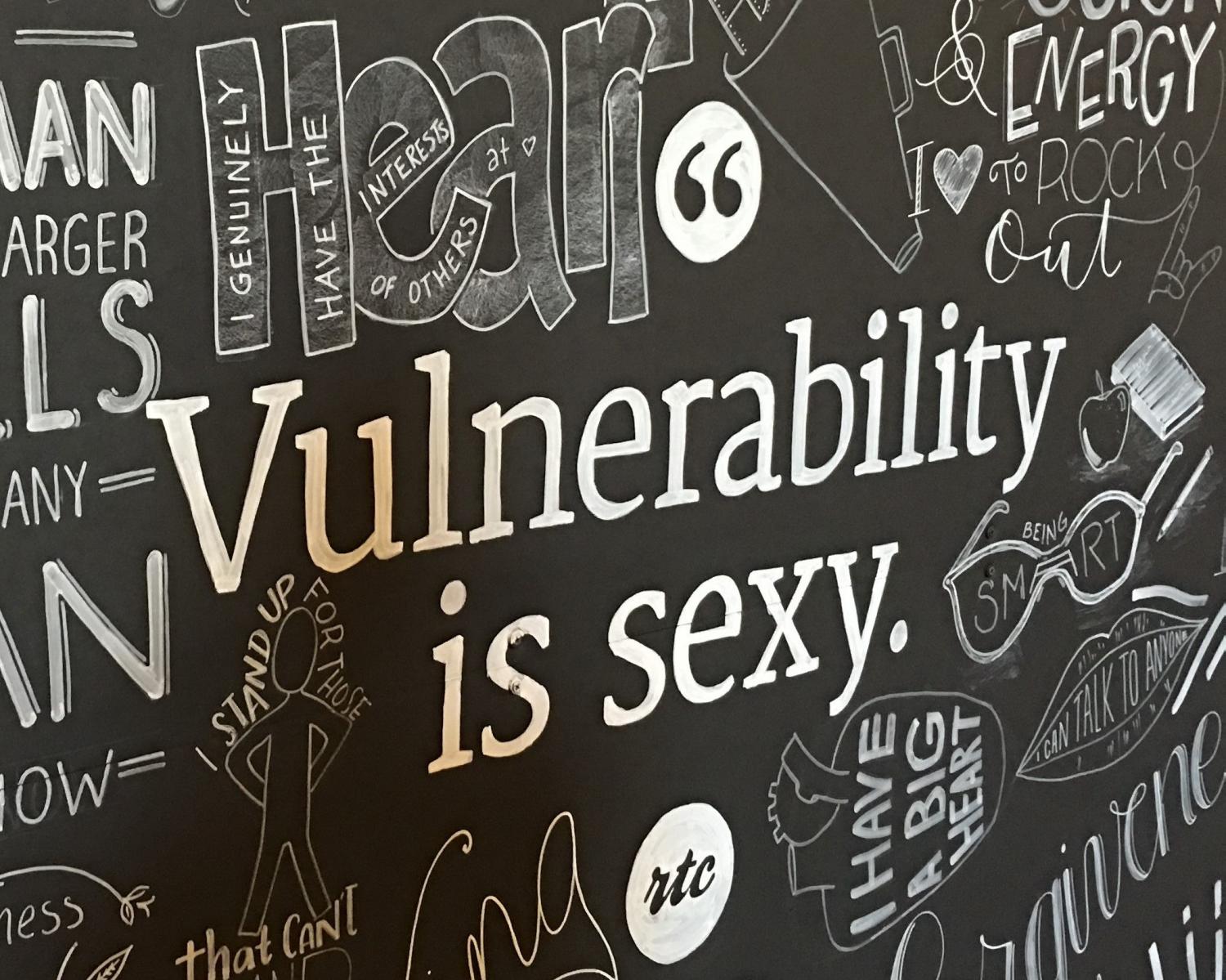

By Jarrett A. Luckett
From April 12 through April 14, hundreds of professionals from across the world came together to deepen their practical application of conscious capitalism (CC).
Conscious capitalism exists to utilize business to elevate humanity. Raj Sisodia is a distinguished professor of global business at Babson College and co-author of the Wall Street Journal bestseller, "Conscious Capitalism: Liberating the Heroic Spirit of Business." As a keynote speaker at the conference, he said: “It hasn’t been government, religion or nonprofits that has lifted people out of poverty. It has been business.” Have you ever thought about what has lifted people out of poverty?
Conscious capitalism is based on four tenets:
- Higher purpose: Although profit is very important, business can have a greater focus than making money. Why a company is in existence should be more than to make a profit.
- Stakeholder orientation: Recognizing the interdependent nature of life and business, thereby creating value for customers, employees, vendors, investors, the community, etc.
- Conscious leadership: Conscious leaders embrace a higher purpose and focus on creating value for all stakeholders.
- Conscious culture: This connects the stakeholder to each other and to the purpose, people and processes that comprises the company
Packing a ballroom with a massive amount of energy, over 600 attendees gathered in Chicago to learn about how to practically apply this conscious approach to business. Half were at their first national CC event and over 20 were from outside of the United States including Brazil, Canada, Costa Rica and the U.K.
After talking to many attendees, it was evident that people and companies want to be driven by more than profit. Work teams came together, CEOs brought key staff and if some CEOs could not attend the event, they sent staff so they could learn and bring back content.
Many business owners said that after being in business for years, they were tired of the main focus being simply about profit. Directors, supervisors and managers attended because they want to be better leaders and inspire their teams.
With five keynote speakers and over 30 practicums, there was a lot to learn! What can over 600 attendees do help businesses become more conscious? Sisodia said: “We must change the narrative of business.” But how to do this? Here are four themes that emerged from the conference on ways to change the narrative of business:
- Business is not fundamentally bad: Sisodia gave an example of how business leaders are portrayed in movies. How many movies have you seen where the business executive is a kind and loving person who cares about more than making the company money? Not many times, right? Business people are not villains and business is not bad. We have to change the way that we view and speak about business, recognizing the positive impact that it can have on the world.
- Personal growth and development: John Mackey, co-founder and co-CEO of Whole Foods Market, spoke at the conference and emphasized that personal development is vital to becoming a conscious leader and developing a conscious company. Self-awareness is a vital key to becoming a great leader, Mackey said, and most people do not have a great degree of knowing and understanding themselves. Mackey closed his keynote stating: “Set time aside for self-awareness. If we can lead ourselves, then we can possibly lead others.”
- Do it: If individuals and companies want to become more conscious in their approach to business then they have to take action. They have to find ways to make changes within themselves as individuals and find ways to evolve their business into a company that is known for their conscious approach. Sisodia mentioned the every MBA student knows about Whole Foods, Costco, Patagonia and Southwest. Whether it is a large or small company, evolving our approach to business will no longer make these case study companies the minority examples of conscious business.
- Grow the conversation: Talk to colleagues, your staff, and people that you meet at networking events about changing the narrative of business. Talk to people about what you are doing and the changes that you are making personally as you work to become a conscious professional. Talk about what your company is doing. Like Cory Blake from Round Table Companies says, “Vulnerability is sexy.” So get vulnerable and don’t just share the good that has come from learning and growing in conscious capitalism. Talk about the challenges, the struggles, and mistakes. Talking seems so simple but it is effective and we do not need a business model to have a conversation.
Like Raj Sisodia said, business is not fundamentally bad. It does a lot of good in the world but many business are not on the path of consciousness. We are an ecosystem, intertwined by our existence and actions. Our approach to business is going to make an impact on all stakeholders. That impression is going to affect how stakeholders view business as a whole, thus creating the narrative of business.
Let’s evolve the narrative from being viewed as villains and demonstrate the heroic nature of business. What are you going to do going forward, to evolve the narrative of business? To start, you can share this article with your team, your friends, and on social media.
Images courtesy of Conscious Capitalism
Based in Milwaukee, Wisconsin, Jarrett A. Luckett is the Co-founder and Director of the first Conscious Capitalism Chapter in Wisconsin. He has a background in healthcare including organization development. Currently sitting on the board of Exploit No More, he is actively involved in anti-human trafficking efforts and speaks at conferences. In his free time he likes to watch race cars and eat pizza. You can reach him at [email protected] or on twitter @sirluckett.
Beyond Energy Savings, Smart Buildings Are a Triple Threat


By Darlene Pope
Investments in green-building design and smart-building technologies are not the same. But they do increasingly go hand-in-hand as corporations work to achieve ambitious energy- (and cost-) savings targets. While energy efficiency may be the primary goal, many additional benefits accompany green or smart investments, according to experts presenting at the recent 2016 Building Energy Summit. Energy savings are just the tip of the iceberg.
Building technology is evolving more rapidly today than at any other point in history. That’s one reason that this year’s Building Energy Summit covered not just energy efficiency strategies in commercial buildings, but also all of the other ways new building technologies can contribute to better companies and communities.
There’s a new technology revolution underway, in the form of “smart” building operating systems and features that are transforming how commercial buildings are operated and how we work, live and play within them. New technologies are changing our buildings and communities — and it’s all about smart buildings.
What is a smart building?
In a smart building, a central network integrates building systems such as HVAC, lighting, access control, and even elevators, so they can communicate with each other, share data, and operate more efficiently—like the nervous system of the human body. Once the network is in place, the options for smart applications are endless.
Smart building technologies initially were adopted for the energy savings that can be achieved when all building systems are working together as efficiently as possible. Connected building systems, combined with a smart building management platform, constantly self-adjust in response to real time occupancy, air temperature, humidity, personal preferences, and other environmental factors.
Smart office solutions: “Just right”
Advanced systems can now offer continuous “commissioning,” a process that not only keeps the building operating smoothly, but also helps keep the temperature, humidity and ventilation just right for employee comfort. Intelligent lighting systems respond to the availability of natural light and actual space usage rather than operating by preset energy-wasting time schedules. Mobile apps are now available that can be used to open doors, adjust lighting, assign workspace, locate the best available parking spot and even connect to the closest whiteboard for collaboration.
A well-designed smart building can provide significant value for corporate employers and their employees:
- Sustainability benefits in the form of improved energy efficiency and water conservation;
- Better workplace services and amenities that make the office more comfortable and productive;
- Heating, air conditioning and ventilation that respond to real-time conditions and individual occupant needs; and
- A safer, healthier and more productive built environment.
Additionally, all the data generated by smart building systems can be captured, analyzed, and transformed into business intelligence and insights. Workplace strategists can then practically apply this information to design the workplace more effectively, providing more of the right kinds of workspaces and repurposing under-utilized areas.
The business case for smart buildings
When you consider that companies spend 10 times their energy costs on real estate and 100 times their energy costs on their workforce, it only makes sense to consider how technology impacts the bigger picture. When a company improves worker productivity and delivers a better use of space along with the energy savings, the return on investment in smart building systems is exponential. Furthermore, smart buildings have lower operating costs and longer equipment life cycles than those with legacy systems, allowing companies to invest capital elsewhere.
Whether motivated by corporate social responsibility, the need to attract top talent, or a desire for cost efficiency, companies today are realizing smart building benefits well beyond their initial vision. Making buildings more responsive to the needs of the occupants is a goal for everyone—from corporate tenants and their employees to building managers, owners and investors—and it’s just smart business.
Image credit: Pixabay
Darlene Pope is Senior Vice President, Energy and Sustainability Services, at JLL. She has 25 years of experience in commercial real estate, technology and smart building solutions, along with a passion for making a positive impact on building operations and management. She founded and heads the annual Building Energy Summit® and is a nationally recognized author and speaker on intelligent buildings, energy management, green buildings, sustainability, in-building wireless solutions and other real estate technologies.